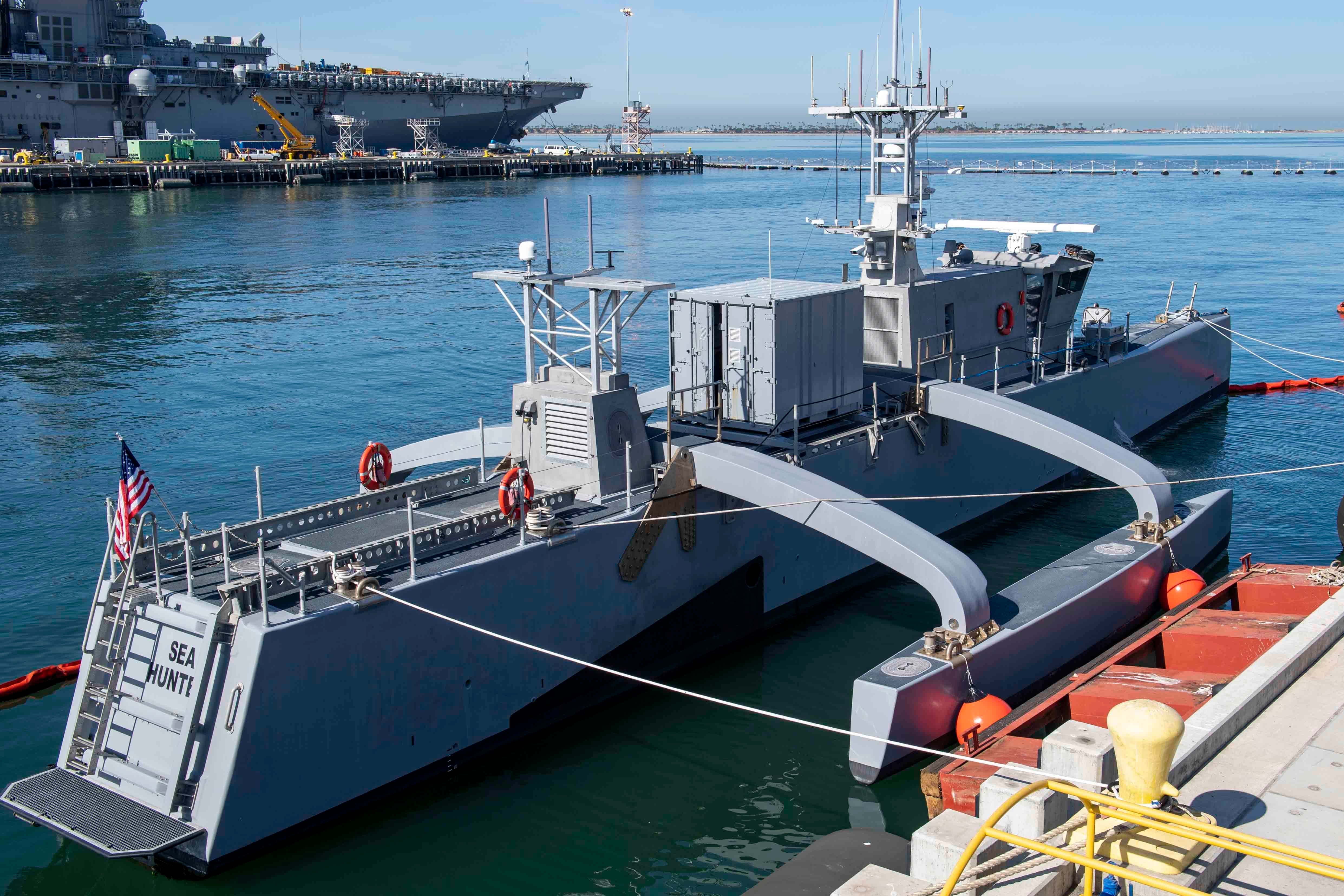The Pacific Fleet has stood up Unmanned Surface Vessel Division One to expedite the integration of unmanned surface vessels.
The unit will manage unmanned surface vessel experimentation for medium and large unmanned surface vessels like the Sea Hunter and the Sea Hawk, both of which will participate in anti-submarine warfare missions. The Pacific Fleet’s Naval Surface Force held a ceremony May 13 establishing the command at Naval Base San Diego.
“To meet the challenges of the 21st Century, we must continue to innovate the surface force,” Cmdr. Jeremiah Daley, the commanding officer of the unit, said in a Navy news release. “USVDIV One will accelerate the delivery of credible and reliable unmanned systems in conjunction with increasingly capable manned platforms into the fleet.”
Vice Adm. Roy Kitchener, commander of Naval Surface Forces, was also present at the ceremony and described the command as a “catalyst for innovation as we employ unmanned surface capabilities in the Pacific Fleet.”
“The implementation of unmanned systems will increase decision speed and lethality to enhance our warfighting advantage,” Kitchener said.
The creation of the division follows the Navy’s first fleet exercise for unmanned systems on the West Coast, called “Unmanned Integrated Battle Problem 21,” last year. Both the Sea Hunter and the Sea Hawk were involved in the April 2021 exercise, however, the Navy remained tight-lipped about specifics.
Rear Adm. Jim Aiken, who oversaw the exercise, told reporters such details were classified and related to intelligence, surveillance and reconnaissance. However, he did share that one scenario in the exercise required drones to extend the sight of a warship to shoot a missile from long range.
More recently, U.S. 5th Fleet hosted International Maritime Exercise 2022 and Cutlass Express 2022 in January and February, combined exercises that included 9,000 personnel, 50 ships and approximately 80 unmanned systems from 60 regional navies. The exercises was designed to advance experimentation with unmanned vehicles and artificial intelligence.
“One of my biggest takeaways: We just need to to repeat that type of approach,” Vice Adm. Scott Conn, deputy chief of naval operations for warfighting requirements and capabilities, said of the exercises during the Sea-Air-Space Exposition in April. “Because it involves our allies, we do not have a monopoly on this technology. We need to be aware of what they have and what they can bring in the campaigning effort.”
The Navy is still nailing down exactly how unmanned vessels will integrate into the fleet. The Navy’s new 30-year shipbuilding plan offers three different scenarios for bolstering the size of the fleet — providing two scenarios for procurement under “a budget with no real growth,” and another alternative with an unconstrained budget.
In the event of no real budget growth, the Navy anticipates having 89 to 149 unmanned platform systems by FY45, according to the report.







